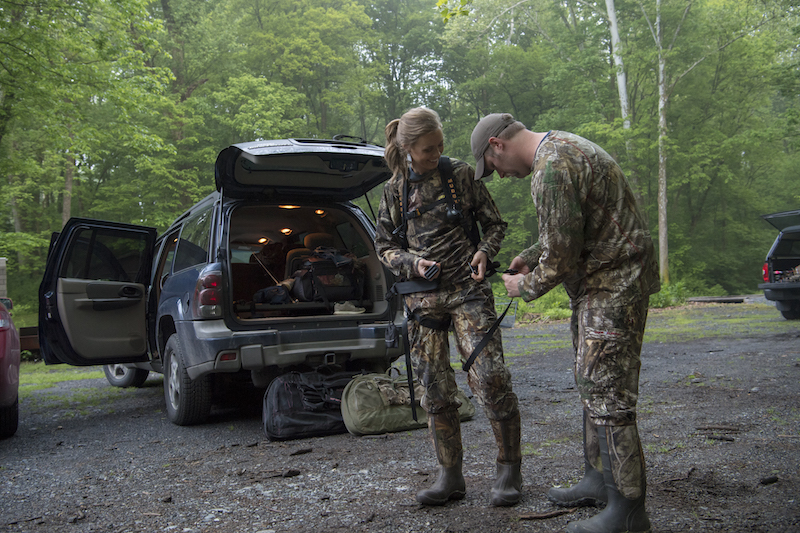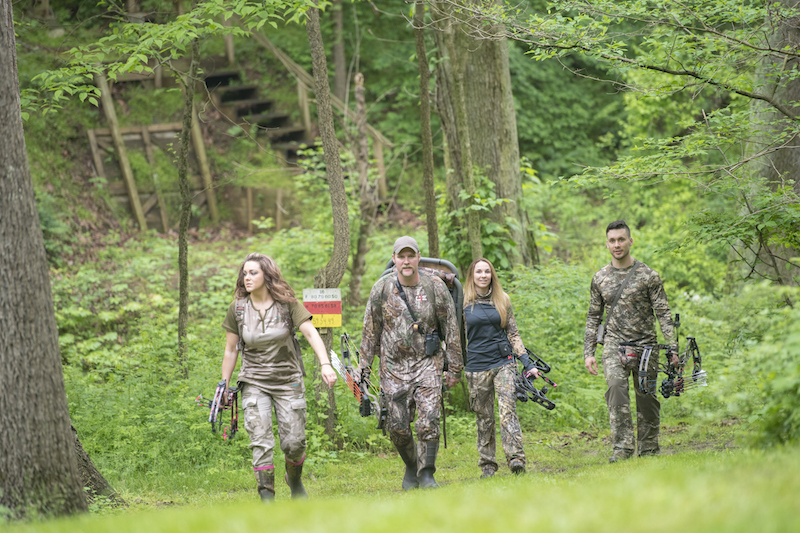Are you interested in bowhunting? We’re here to help you enjoy all of its excitement and challenges.
Beginning bowhunters should take a bowhunter education course. The class covers the same topics as basic hunter education, including ethics, safety and survival skills. It also covers bowhunting-specific skills like shot placement, archery equipment and blood-trailing. Completing the course boosts your confidence afield.
The National Bowhunter Education Foundation is the program’s certifying organization. Courses are available nationwide. Some states require an International Bowhunter Education Program certificate to bowhunt. You can find a course through the NBEF website. Courses are also available online.
Before you can legally hunt you must buy a hunting license, which is available through the state’s wildlife management agency. Always carry your license in the field, along with the necessary tags/permits. Hunting regulations can usually be found online and in booklet form. They provide season dates, equipment regulations, bag limits, shooting hours and more.

Learn the ropes with a bowhunter you trust. Photo Credit: ATA
Local archery shops are great resources. If you need equipment they’ll set you up. Here’s an idea of the gear you need to start. You can try different bows, sights and releases while shopping to find what works best. Experts will answer questions and provide guidance.
If you’re new to archery itself, lessons are the quickest way to improve your skills and build a solid foundation. Even if you’re already an archer, lessons polish your skills. A certified instructor will help you establish good form and shot execution while building muscle memory.
Hunting with an experienced partner provides valuable lessons. It’s also safer to hunt with others. If you have family or friends who hunt, ask if they’ll take you. Everyone learned somewhere, and most hunters enjoy passing along their knowledge. For tips on how to be a good hunting partner, read How to Get Invited Back to Hunt.
The United States was home to 11.5 million active hunters in 2016, according to a 2017 U.S. Fish and Wildlife Service survey. If you don’t know a hunter, ask around. If you’re looking for a mentor, ask family, friends, co-workers and church members if they know anyone.
Nonprofit conservation organizations like the Quality Deer Management Association, Rocky Mountain Elk Foundation and National Wild Turkey Federation can help you find a mentor. Some even host events for new hunters. Join these organizations to connect with other hunters.
Biologists at wildlife agencies manage game animals with hunting seasons, whose dates can be found online and in regulation booklets. Seasons for most small- and big-game species like elk, deer, moose, pronghorn, rabbits and waterfowl are held in fall and early winter. Bear and turkey often have fall and spring seasons.
Wildlife patterns dictate what time of day is best to hunt, but you can encounter animals any time. Many factors determine when they move. Deer and elk are less likely to move in daylight on hot days unless they’re headed to water.
Animals move most near dawn and dusk, giving hunters their best opportunities. Morning hunts give you plenty of daylight for tracking and hauling out animals you’ve arrowed. White-tailed deer, however,tend to move most late in the day when heading to feed. The most mature animals often don’t move until it’s almost dark. It’s important to get into place before animals move into the area, especially if you’re hunting from a treestand or ground blind.

Find a public land area or ask a landowner for permission. Photo Credit: ATA
Finding a hunting spot is one of the most exciting and fulfilling parts of hunting, whether you hunt public or private land. Public-land options include national wildlife refuges, wildlife-management areas, and state and national forests. Always check the regulations before going afield.
Most land in the eastern two-thirds of the U.S. is privately owned, and you need landowner permission to hunt. You can also lease land or join a hunting club. Here are some tips for making a good impression and gaining access to private land.
Once you’ve selected a general area, find a spot where wildlife lives. Wildlife need food, water and habitat. Look for animal sign like beds, scat, rubs, tracks and scrapes. Use a map, GPS unit and/or smartphone app to mark where you spot sign.
Everyone’s “why” for hunting is personal. The field-to-fork movement is a popular reason many people go hunting because they enjoy sourcing their own meat. Game meat is an excellent source of lean protein. Hunters take great satisfaction in harvesting an animal and cooking the meat for family and friends. You can find excellent wild-game recipes online.
Hunting also provides quality time outside for those who must spend several hours a day working inside. Some health benefits for being outside include reduced stress, lower blood pressure and improved memory. Archery and hunting also provide great exercise.
Hunting lets people share amazing experiences. Success, close calls and even near misses are exciting moments that turn into hunting stories shared on couches and around campfires. Hunting can become a family tradition and lifelong pastime. Learning to hunt is a fun challenge that reaps big rewards. Whatever your reason or “why,” you’ll be a part of a community that’s always willing to help.